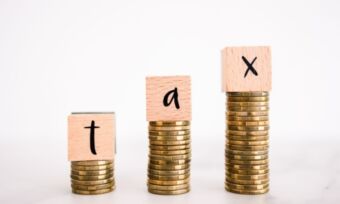Preservation age: when can I access my super?
Find out what your preservation age is and learn about what your options are once you reach it.

Find out what your preservation age is and learn about what your options are once you reach it.
Superannuation is designed to help fund Australians’ retirement and is generally locked away until you meet one of the conditions of its release. So what is your preservation age, and what happens when you reach it?
What does preservation age mean?
Your preservation age is generally the age at which you can start to withdraw your super. However, a person who has reached their preservation age, but continues to earn an income from working may not be able to access their super unless they have started a transition to retirement income stream, according to the Australian Taxation Office (ATO).
What is my preservation age?
From July 1st 2024, the preservation age reached 60 for those who had not already secured it. It’s also worth noting that your preservation age is not the same as the pension eligibility age, which is currently 67 and due to increase over the coming years.
How can I withdraw my super when I reach my preservation age?
When you reach your preservation age and meet a condition of release, the options for accessing your super include taking it as a super income stream, a transition to retirement income stream or a lump sum. You may also be able to opt for a combination of a lump sum and an income stream.
The methods available to you will depend on your circumstances, such as whether or not you continue to work. The way you access your super can have tax and other implications – such as potentially impacting on your transfer balance cap and your eligibility to receive government support, such as the age pension – so it may be worth speaking to a financial adviser before you start to withdraw funds.
Accessing super as an income stream
A super income stream is a regular payment made to you from your super savings. The payments do not need to be made at the same interval or at a set amount, but must be at least annual and made over an identifiable period of time, according to the ATO.
The main types of super income streams are:
- Account-based super income streams. Your income stream provider must pay this to you each year as part of an income stream. This is set by the ATO and based on a percentage of your total income stream balance and the minimum drawdown generally increases as you get older. If your income stream provider does not pay the minimum amount to you in a financial year, your income stream is deemed to have stopped and there may be tax implications.
- Capped defined benefit income streams. These can be lifetime pensions (regardless of when they started) or lifetime annuities, life expectancy pensions and annuities, and market-linked pensions and annuities that existed prior to 1 July, 2017.
- Transition to retirement income streams. The rules are different for transition to retirement income streams. With this arrangement, you continue to work while drawing down part of your super, but there are restrictions on how much you can receive from your retirement savings each year.
Accessing super as a lump sum
If you have reached your preservation age and have met a condition of release, you can choose to withdraw your super as a lump sum, as long as your provider allows you to access your super this way. With a lump sum, all or part of your balance is paid to you in a one-off transaction.
If you withdraw a lump sum from your super, it is generally treated differently to funds that remain in super for tax purposes. For example, if you invest the lump sum funds you have withdrawn, any investment earnings may need to be declared in your tax return, the ATO says. You cannot receive your super as a lump sum if you are transitioning to retirement.
Can you access your super before your preservation age?
It may be possible to access part of your super before you reach your preservation age, in limited circumstances, with strict eligibility criteria. These can include:
- Withdrawing the extra super contributions you have made to save for your first home, plus associated investment returns (First Home Super Saver Scheme).
- Accessing funds to help with severe financial hardship.
- Accessing funds under compassionate grounds.
You may also be interested in the 2024 Superannuation Guarantee and rate changes.
 Online rollover
Online rollover
 Online application
Online application
 Online rollover
Online rollover
 Online application
Online application
 Online rollover
Online rollover
 Online application
Online application
 Online rollover
Online rollover
 Online application
Online application
 Online rollover
Online rollover
 Online application
Online application
Canstar may earn a fee for referrals from its website tables and from Promotion or Sponsorship of certain products. Fees payable by product providers for referrals and Sponsorship or Promotion may vary between providers, website position, and revenue model. Sponsorship or Promotion fees may be higher than referral fees.
On our ratings results, comparison tables and some other advertising, we may provide links to third party websites. The primary purpose of these links is to help consumers continue their journey from the ‘research phase’ to the ‘purchasing’ phase. If customers purchase a product after clicking a certain link, Canstar may be paid a commission or fee by the referral partner. Where products are displayed in a comparison table, the display order is not influenced by commercial arrangements and the display sort order is disclosed at the top of the table.
Sponsored or Promoted products are clearly disclosed as such on the website page. They may appear in a number of areas of the website, such as in comparison tables, on hub pages, and in articles. The table position of the Sponsored or Promoted product does not indicate any ranking or rating by Canstar.
Sponsored or Promoted products table
- Sponsored or promoted products that are in a table separate to the comparison tables in this article are displayed from lowest to highest annual cost.
- Performance figures shown for Sponsored or Promoted products reflect net investment performance, i.e. net of investment tax, investment management fees and the applicable administration fees based on an account balance of $50,000. To learn more about performance information, click here.
- Please note that all information about performance returns is historical. Past performance should not be relied upon as an indicator of future performance; unit prices and the value of your investment may fall as well as rise.
Main image: Joe Belanger/Shutterstock.com
This article was reviewed by our Editor-in-Chief Nina Rinella before it was updated, as part of our fact-checking process.

Try our Superannuation comparison tool to instantly compare Canstar expert rated options.






